37+ Sample Lease Amendment
-
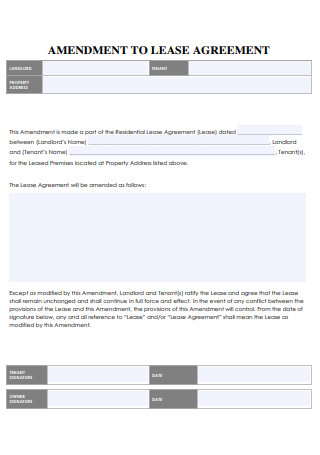
Amendment to Lease Agreement
download now -
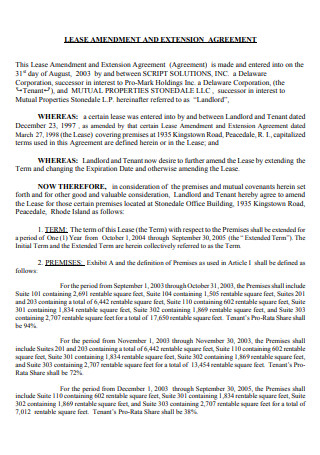
Lease Amendment and Extension Agreement
download now -

Lease Amendment Template
download now -

Third Amendment to Lease Agreement
download now -

Lease Amendment Tenant Change
download now -

Lease Amendment and Assignment Agreement
download now -
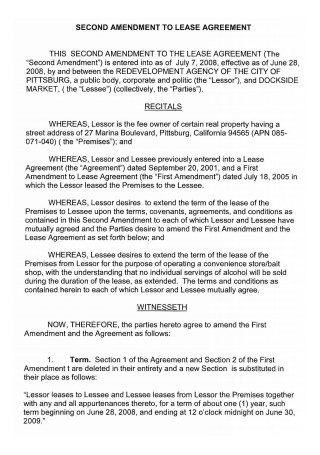
Second Amendment to Lease Agreement
download now -
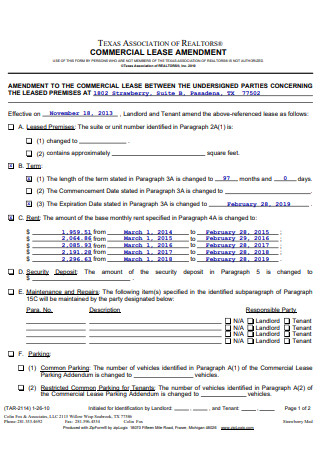
Commercial Lease Amendment
download now -
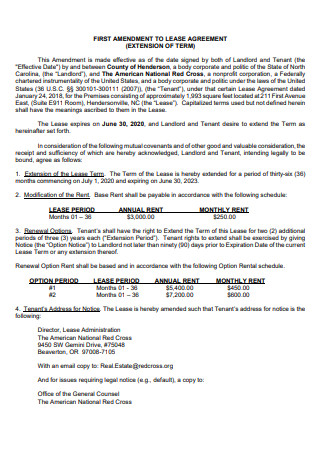
First Amendment to Lease Agreement
download now -
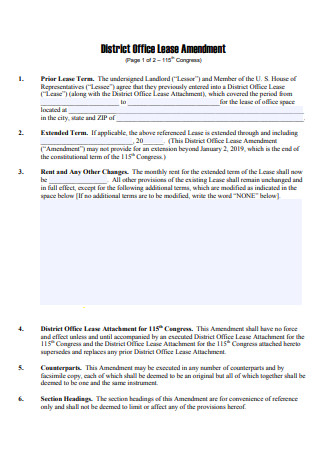
District Office Lease Amendment
download now -

Amendment to Memorandum of Lease
download now -

Amendment to Farm Lease Agreement
download now -
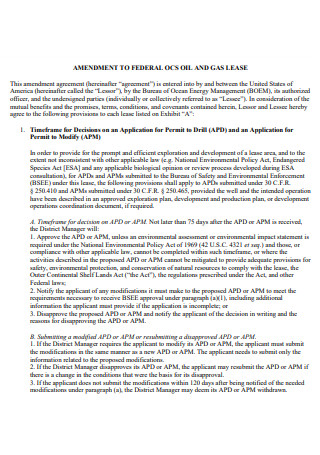
Amendment to Federal Oil and Gas Lease
download now -
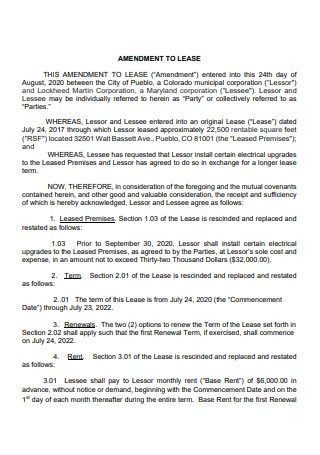
Formal Lease Amendment
download now -
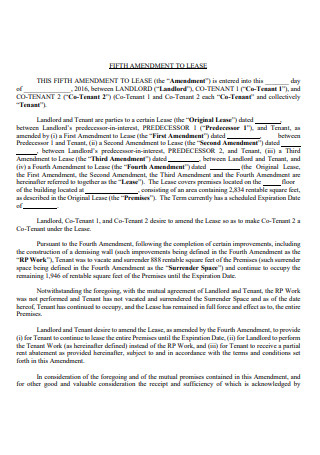
Fifth Amendment to Lease
download now -
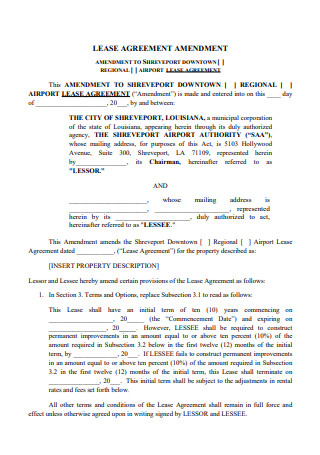
Lease Agreement Amendment
download now -
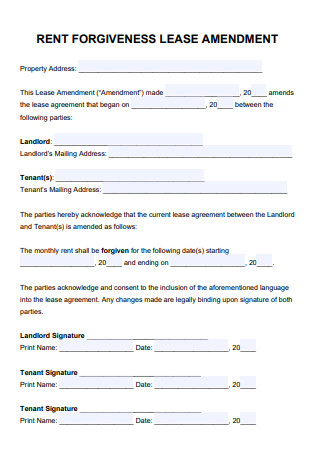
Rent Lease Amendment
download now -
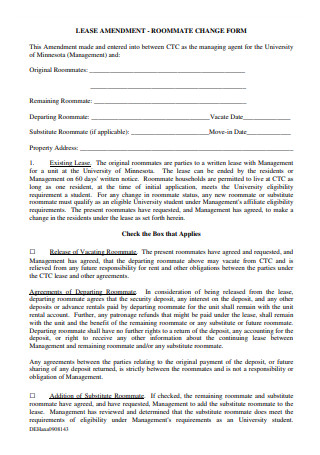
Lease Amendment Change Form
download now -
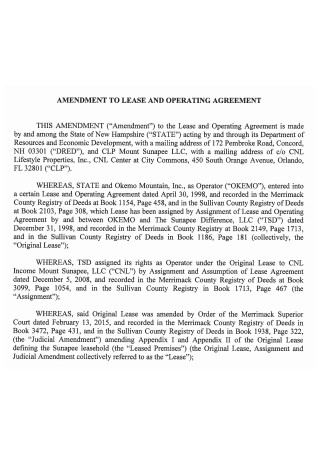
Amendment to Lease and Operating Agreement
download now -

Fourth Amendment to Site Lease
download now -
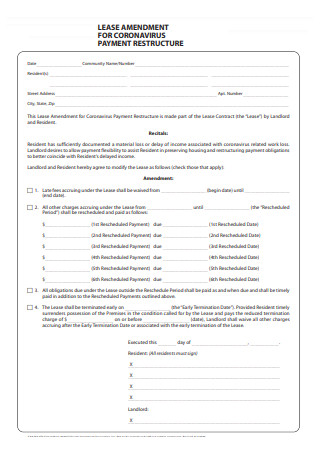
Lease Amendment For Payment
download now -
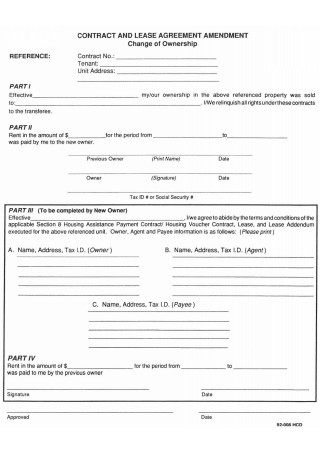
Contract and Lease Agreement Amendment
download now -
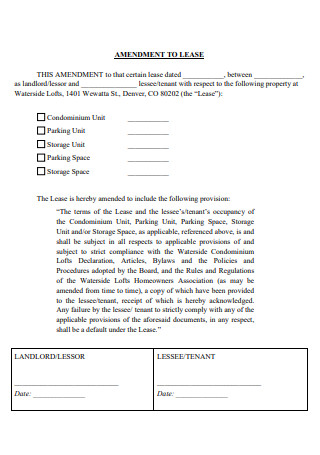
Printable Lease Amendment
download now -
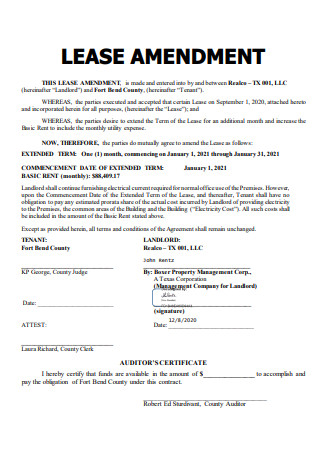
Basic Lease Amendment
download now -
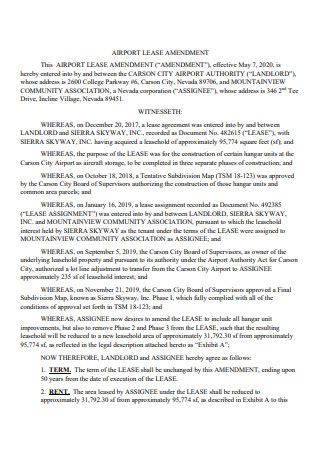
Airport Lease Amendment
download now -
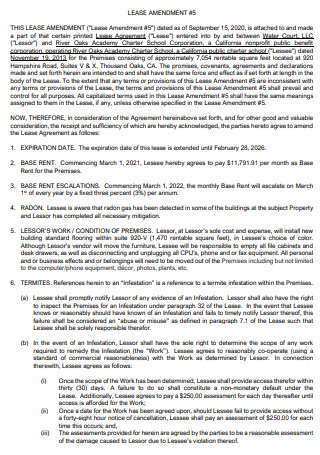
Sample Lease Amendment
download now -
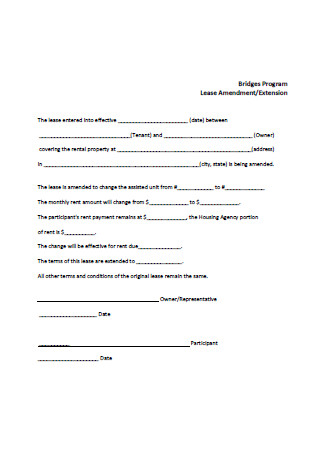
Program Lease Amendment
download now -
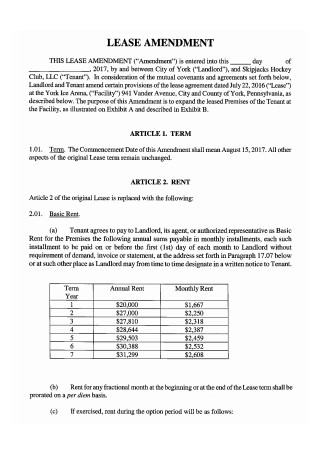
Lease Amendment Format
download now -
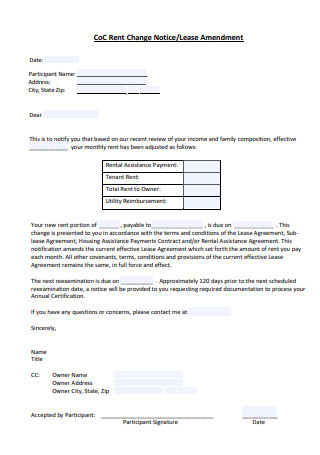
Rent Change Notice Lease Amendment
download now -
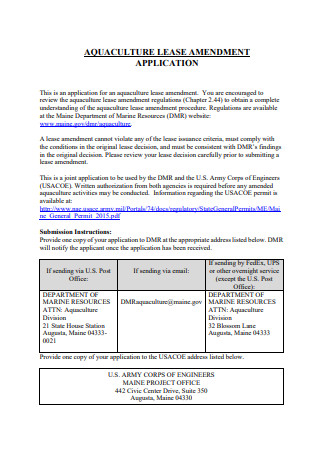
Lease Amendment Application
download now -
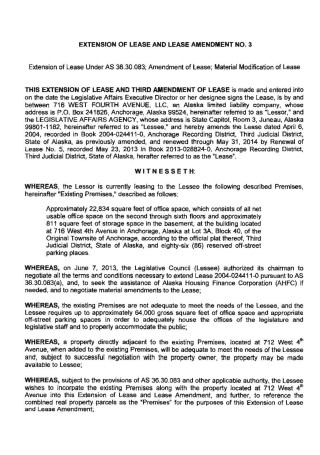
Extension of Lease Amendment
download now -
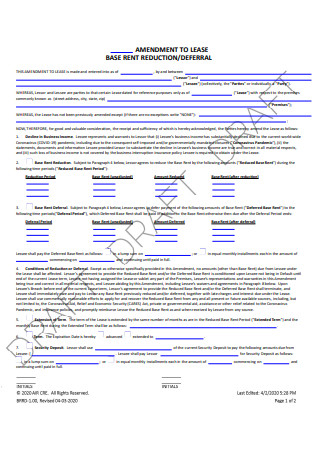
Draft Lease Amendment
download now -
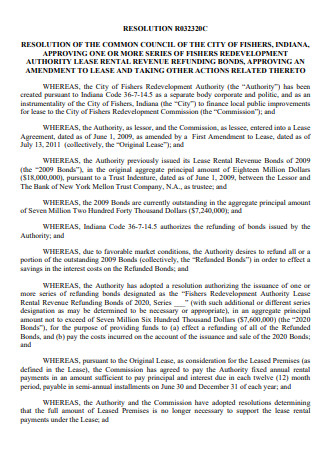
Lease Amendment in PDF
download now -
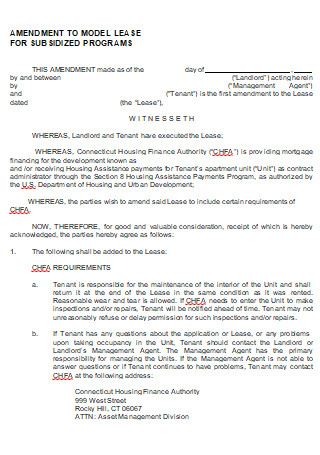
Model Lease Amendment
download now -
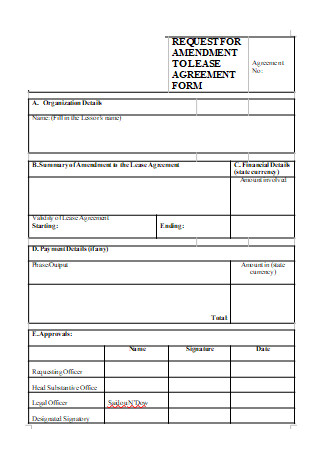
Amendment to Lease Agreement Form
download now -
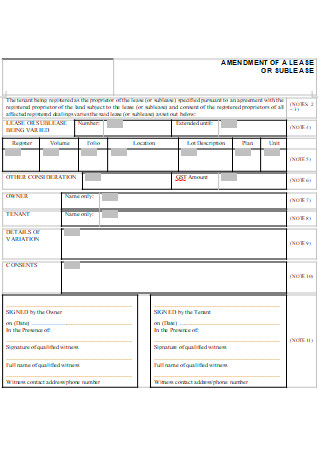
Lease Amendment in DOC
download now -
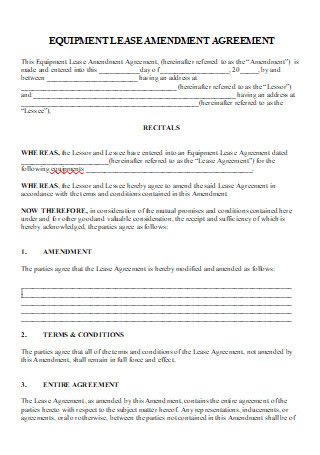
Equipment Lease Amendment Agreement
download now -
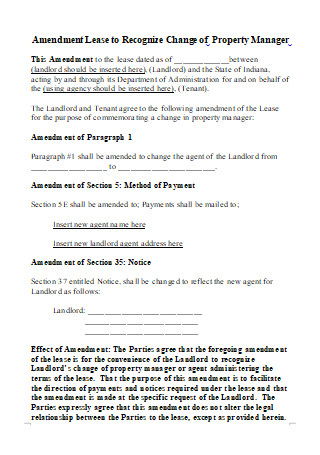
Standard Lease Amendment
download now
FREE Lease Amendment s to Download
37+ Sample Lease Amendment
What is a lease amendment?
Common Issues Resolved in Lease Amendments
How to Make a Lease Amendment
What’s the difference between an addendum and an amendment?
Are clauses in the original lease superseded once an amendment is made?
How long does it take to amend a lease?
What is a lease amendment?
While we learned a great deal of what a lease is in the introductory part, it is high time for us to tackle what a lease amendment is. Unlike a lease addendum that involves an additional document that does not necessarily cancel or revise the agreed terms written in the previous document and just provides extra terms and points, a lease amendment pertains to the modification of the original lease through removing a few clauses that the parties do not want to take effect anymore, or through changing a few clauses that exist in the previous one. This is important because it inherently updates the old lease and creates more space and allowance for the parties involved. Moreover, the amendments made for the new document is to be agreed upon by both parties in order for it to be legal and legitimate.
Common Issues Resolved in Lease Amendments
When creating and agreeing to the original lease, both parties are still unaware of unforeseen circumstances that may heavily affect their comfort, satisfaction, or interests. Starting out something may very well be considered as a trial and error process since none is yet sure of the things that they would want in the long run. The checking and balancing of the situations of both parties can only be done when the transaction has been sustaining for a period of time. This is why lease amendments are important, because they give both the lessor and the lessee the avenue to employ changes within the agreement, making their transaction more palatable to what they want, and making sure that they are having a pleasant experience. Lease amendments are done usually because of overarching circumstances that cause discomfort to individuals, or perhaps they just found better alternatives for the clauses that they have written in the past. These are the common issues that are resolved in lease amendments.
How to Make a Lease Amendment
The importance of and the common issues that call for a lease amendment have already been stressed enough in this article, and that leads us to the next portion, which is a step by step process or a walk-through on how to make one. There are essential parts and keywords needed to be reflected in a lease amendment in order for it to be credible and legitimate, and these might be things you can easily miss especially when you’re making your amendment manually, or perhaps just downloaded a template from the internet that does not necessarily tailor fit the nature of your new amendment. Making sure that your revised agreement is holistic and legally correct is an important step to take in creating one, and this portion may truly help you with that! This is how you can make a lease amendment.
Step 1: Legal Names of the Parties
The legal names of the parties have to appear in the amendment for tracing purposes, and for identification. The names usually appear in the earlier parts of the amendment because these are one of the most important things to be looked into because they basically dictate who are involved in the agreement, hence making the entities easily identifiable.
Step 2: Preceding Clause
As we have learned in this article, amendments are made because of certain clauses written in the previous lease that either of the parties do not want to take effect anymore. The preceding clause is to be explicitly stated in the lease amendment in order for both parties, and legal enforcers to know what part of the previous lease is being changed or removed as per request or agreement of the parties. This is important to include for formality purposes, as well for better tracking since the reference is easily pointed out.
Step 3: The Amendment
After writing the preceding clause, the amendment, or the change or removal is to be explicitly stated as well. This sets out the clear standards and new conditions that the parties agree to employ. This creates an understandable and official statement of the terms as a result of the negotiation.
Step 4: Signatories
Of course, for the whole thing to be effective and guaranteed to be recognized by the parties involved, their respective signatures have to be affixed in the bottom part of the legal document.
Step 5: Legal Advisor
Only the parties can tell if their agreement needs the supervision or witness of a legal advisor. This better makes sure that your content is aligned with the law, and that you are still following federal and state mandates that uphold fairness of all individuals, and requirements as such. A lawyer may also be a really good witness for credibility reasons. However, this is totally optional.
What’s the difference between an addendum and an amendment?
An addendum is an additional document that does not make certain clauses in the previous lease null and void. It basically just provides an extension, and does not stand on its own without the original lease itself. The content between an addendum and an original lease is not mutually exclusive, and their relationship is simply supplemental. An amendment, on the other hand, cancels out specific clauses and replaces them with new ones.
Are clauses in the original lease superseded once an amendment is made?
Yes. The inherent purpose of an amendment is to make revisions regarding the original document that parties may see as irrelevant, or inapplicable in the current context. These revisions may officially and legally remove portions stated in the original lease, and they also have the power to replace and change some of these portions. However, no harm is necessarily done due to amendments since mutual consent is still required and present.
How long does it take to amend a lease?
It usually depends on where you are living, or perhaps the rules that your landlord specifically follows. However, it usually takes up to three to twelve months in order for an amendment to be able to be issued.
The idea of an absolute finality is reprehensible in a world that is constantly evolving. Changes are truly needed because everything necessary cannot be possibly cooped up into a single confrontation that takes place only one time. This basically limits the stakeholders into unfair standards, as well as restrictive actions that may be important to take effect for the benefit of everyone. Lease amendments give the freedom and avenue for change to both the client and the owner, and this is essential in making sure that their interests are met, and because these interests change from time to time, we are making sure that the rules are also directly proportional to this nature of dynamics.
